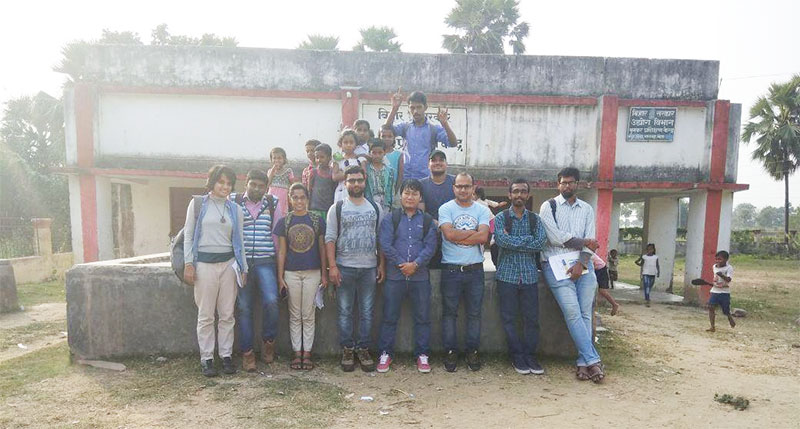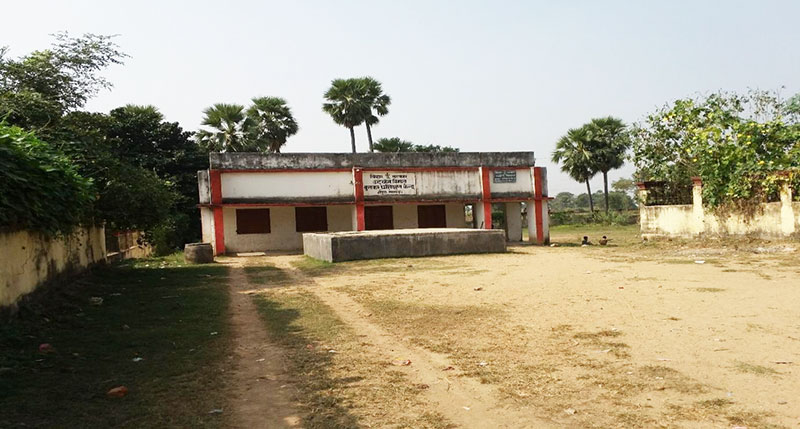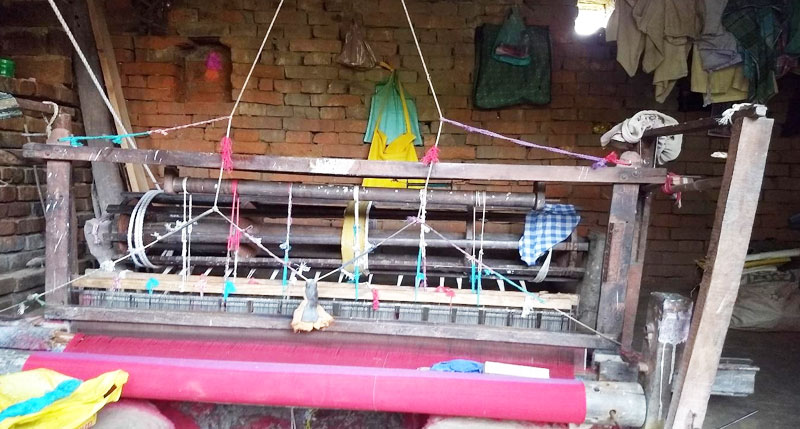Exploring Interactions of Environment & Society in Asia – A field trip to the Weavers village ‘Nepura’
November 12, 2017
As part of the course titled Exploring Interactions of Environment, Technology and Society in Asia Dr. Aviram Sharma organized a field trip for students to a village named Nepura in Shilao block of Nalanda district. The field work was organized on 12 th November 2017. Nepura is a well-known village in Bihar among weaver community. The state government is supporting the weaver community of Nepura through various initiatives and the village is also being promoted as a tourist site. During the last decade, Bihar government is trying to revive the weaving clusters in different parts of the state. Weaving is one of the biggest sectors which employs a huge number of rural and urban population. Nepura is known for handloom weaving. In the Exploring Interactions of Environment, Technology and Society in Asia course, students learned about different conceptions of technological artifacts. The debates around appropriate technology and sustainable technology and grassroots innovations motivated them to explore more along these lines. The class became interested in exploring the weaving technologies in the handloom sector in Bihar.
The field work was planned during the month of October. After discussion with students, the theme for the field work was finalised and students collected relevant articles and reviewed them. After the review of the literature, they identified six major themes which the group wanted to explore during the field work. The themes included, how do the weavers procure the raw materials and how it changed over the years, what are the environmental impacts of raw material extraction? And how the production process and the technology have changed over the years. Often people assume that traditional technologies do not change. Another important aspect was regarding the labour involved in producing the silk and cotton clothes and how to look at it from the livelihood perspective. Is it a sustainable livelihood option? What are the market linkages? And most importantly how the knowledge transfer from one generation to another? Is there any formal mechanism of learning? Based on these themes students prepared an elaborate questionnaire. The questionnaire was discussed in the class room and revised before the field work. After all these preparations the field work was scheduled in November.

The team
The team reached the village around 10 am on November 12. Students were divided into small groups, and each group conducted multiple semi-structured interviews with weaver’s community. Everybody re-assembled after three hours and assessed the situation and discussed the initial findings. After that, all of them went for another round of interviews. Finally the field work was finished by around 4 pm. After returning back to campus, the group again discussed the findings and concluded the field work. Eventually, all the students submitted individual field report, which was evaluated.

Weavers Training Centre, Nepura
This field work provided the students with the opportunity to link what they have learned in the course with their own experience on the field. It busted many of the commonly held myths around traditional technologies. They learnt how to make questionnaires, how to conduct interviews and finally doing the analysis of data collected through filed work and report writing.

Handloom Machine